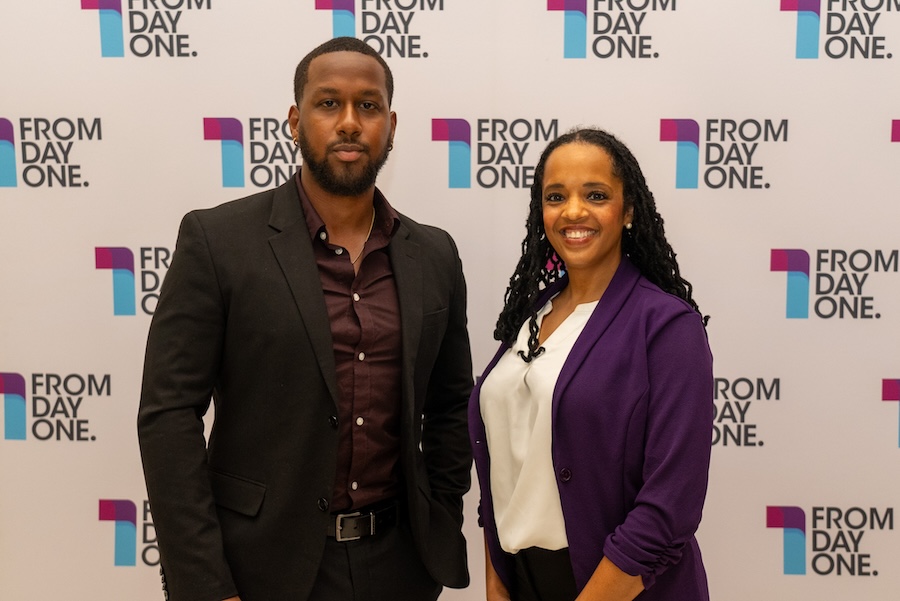The Backlash Against DEI: How Perceptions Are Being Driven by Fear and Sensationalism, Not Facts


DEI has faced intense backlash, often turned into a partisan dog whistle by those aiming to politicize its goals. But is this pushback grounded in reality? In truth, the vast majority of companies remain firmly committed to DEI, both in the U.S. and internationally. Most Americans approve of DEI initiatives, including 78% of Black workers from a Pew Research poll from 2023.
Dr. Stephanie J. Creary, Assistant Professor of Management at the Wharton School, University of Pennsylvania, says the backlash against DEI doesn’t tell an accurate story. “What we found is a story that is not being shared in the media or by politicians, and that is that of all the industries that exist right now, finance is leading the charge. Tech–its commitment to any kind of DEI, including towards Black employees or Black communities [has] continued to increase–in spite of the external environment. And Pharma is in the middle.”
Creary spoke with Earl Hopkins, arts and culture reporter for the The Philadelphia Inquirer, during a fireside chat at From Day One’s Philadelphia conference. They discussed the false narrative around DEI and its future in the workplace.
Recently, Creary spoke at a conference of bankers, a group that Hopkins identified as being stereotypically not diverse. Creary was worried about what kind of crowd she was going to have and what the reception was going to be like. “What does banking look like? It’s predominantly white and predominantly male,” Creary said. But what she found was encouraging and inspiring.
“I was inspired by those institutions that were continuing to lean into the evidence, either internally from their own organization or externally from academia. That suggests that it does make good business sense. There were a lot of people in the room who were saying it’s hard that the topic has become so politicized when that’s not why they had invested all these resources into [DEI].”

Hopkins pointed to the politicization of DEI and how recently it’s faced a lot of legal and political backlash. “Which has prompted many companies to retreat on their initial commitments, or at least...keep their head down amid the storm,” Hopkins said. For example, Ford Motor backed out of its DEI initiatives this past summer, no longer participating “in the Human Rights Campaign’s Corporate Equality Index.”
The headlines can be misleading and frustrating. “I lead with evidence, and every day I get some person in HR or DEI calling me saying, ‘Can you come speak at our organization and help us?’” There's a contradiction between the headlines and what she sees in her inbox.
Right now, she and her team are “combing DEI reports from 2019-2023 (2024 data won’t be available until next year)” in Fortune 100 companies in three industries: financial services, pharma, and tech, which all show DEI efforts as stable or increasing.
“Now that’s not to say that a few companies are reducing their commitments, changing practices, but it’s not a trend. It’s not an empirical trend in the way that is being suggested.” Still, the reported decline in DEI in the media, she adds, isn’t accurate to reality and may be more related to how news is covered and how we consume it.
“I think what we’re suffering from is people who are covering these stories, the people consuming them, are very new. They’re novices. And I can say this as an educator, when people are new and they’re learning something the first time, they tend to make concrete generalizations about things that are complex.”
She points to our innate tendency to “reduce the complexity of the world around us,” she said. “There’s an over simplistic reporting and consumption and interpretation of something that is much more multifaceted and dynamic and nuanced.” Basically, we’re not hearing enough from experts in the field. “And certainly political leaders are not experts on this conversation.”
Looking to the future, does Creary think DEI is going in the right direction? She says she’s hopeful but skeptical.
“So the challenge with the field of DEI practices [is] that there's not always evidence being used to justify the problem that needs to be addressed. And, there’s not always evidence showing that we should continue down this path with these practices, because they’re working.”
There’s hope, she added, in organizations that are “leaning” on the data to identify the problem that needs addressing but also looking to see if the interventions they put in place are working.
However, having access to the right data is still a problem, and Hopkins pointed out a wide discrepancy between quantitative data and qualitative data. “We’re beginning to understand what's happening with people who are in the minority. Oftentimes that doesn’t show up in the quantitative data because they’re underrepresented,” Hopkins said.
Creary confirmed this in a recent analysis conducted with a media company. In her team’s analysis, they looked at the performance reviews between Black and white employees, where the performance reviews were “way more telling than” the quantitative data. “The quantitative data would say that Black employees don't perform as well as the qualitative data. But when you look at the qualitative data, it's very clear that the managers are not all using the same metrics to assess performance. And sometimes the Black employees are getting measured on things like, do they turn their cameras on during meetings and not on things that are actually agreed upon performance indicators.”
“The qualitative data can often tell a much richer story about what's happening and why something is happening than the quantitative data can,” Creary said.
Matthew Koehler is a freelance journalist and licensed real estate agent based in Washington, DC. His work has appeared in Greater Greater Washington, The Washington Post, The Southwester, and Walking Cinema, among others.
The From Day One Newsletter is a monthly roundup of articles, features, and editorials on innovative ways for companies to forge stronger relationships with their employees, customers, and communities.